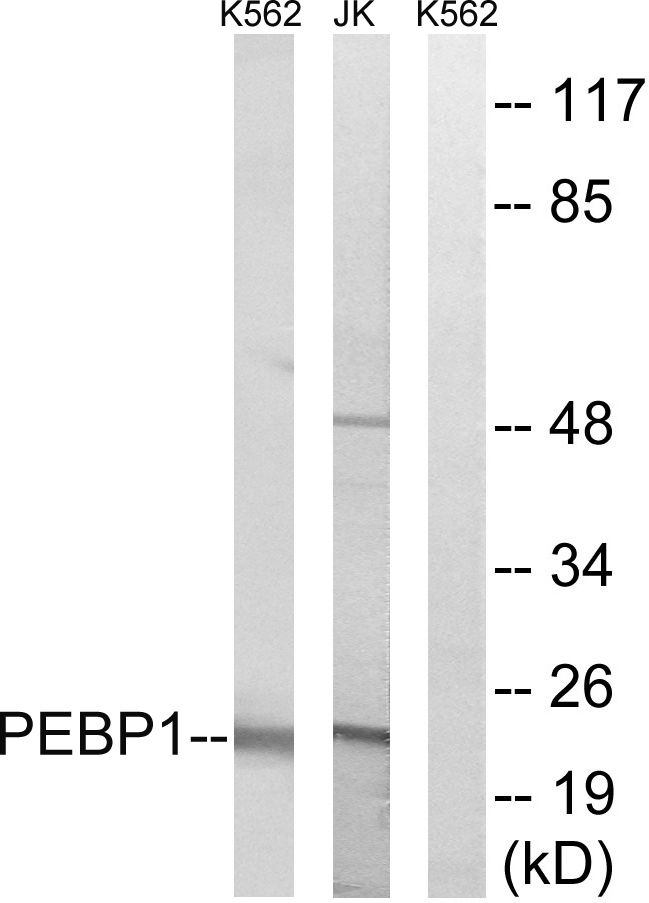
WB analysis of human prostate lysate using GTX89220 RKIP antibody, Internal. Dilution : 0.01microg/ml Loading : 35microg protein in RIPA buffer
RKIP antibody, Internal
GTX89220
ApplicationsWestern Blot, ImmunoHistoChemistry, ImmunoHistoChemistry Paraffin
Product group Antibodies
TargetPEBP1
Overview
- SupplierGeneTex
- Product NameRKIP antibody, Internal
- Delivery Days Customer7
- Application Supplier NoteWB: 0.01-0.03microg/ml. IHC-P: 2-5microg/ml. *Optimal dilutions/concentrations should be determined by the researcher.Not tested in other applications.
- ApplicationsWestern Blot, ImmunoHistoChemistry, ImmunoHistoChemistry Paraffin
- CertificationResearch Use Only
- ClonalityPolyclonal
- Concentration0.50 mg/ml
- ConjugateUnconjugated
- Gene ID5037
- Target namePEBP1
- Target descriptionphosphatidylethanolamine binding protein 1
- Target synonymsHCNP, HCNPpp, HEL-210, HEL-S-34, HEL-S-96, PBP, PEBP, PEBP-1, RKIP, phosphatidylethanolamine-binding protein 1, Raf kinase inhibitory protein, epididymis luminal protein 210, epididymis secretory protein Li 34, epididymis secretory protein Li 96, hippocampal cholinergic neurostimulating peptide, neuropolypeptide h3, prostatic binding protein, raf kinase inhibitor protein
- HostGoat
- IsotypeIgG
- Protein IDP30086
- Protein NamePhosphatidylethanolamine-binding protein 1
- Scientific DescriptionThis gene encodes a member of the phosphatidylethanolamine-binding family of proteins and has been shown to modulate multiple signaling pathways, including the MAP kinase (MAPK), NF-kappa B, and glycogen synthase kinase-3 (GSK-3) signaling pathways. The encoded protein can be further processed to form a smaller cleavage product, hippocampal cholinergic neurostimulating peptide (HCNP), which may be involved in neural development. This gene has been implicated in numerous human cancers and may act as a metastasis suppressor gene. Multiple pseudogenes of this gene have been identified in the genome. [provided by RefSeq, Jul 2015]
- Storage Instruction-20°C or -80°C,2°C to 8°C
- UNSPSC12352203






![ICC/IF analysis of PFA-fixed PC-3M cells using GTX01163 RKIP antibody [SC58-09]. Green : primary antibody Blue : DAPI Permeabilization : 0.25% Triton X-100 in PBS](https://www.genetex.com/upload/website/prouct_img/normal/GTX01163/GTX01163_20200303_ICC-IF_642_w_23053121_823.webp)
![WB analysis of HEK293T cells transfected with RKIP plasmid (Right) or empty vector (Left) for 48 hrs using GTX83917 RKIP antibody [2D4]. Loading : 5 ug per lane](https://www.genetex.com/upload/website/prouct_img/normal/GTX83917/GTX83917_3999_WB_w_23061420_381.webp)
